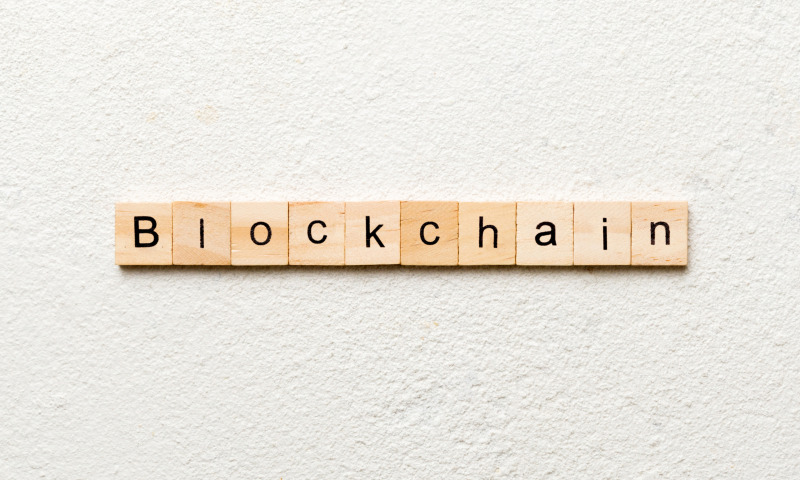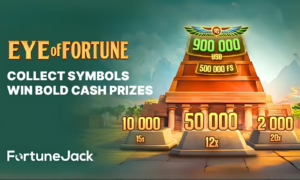A blockchain is a digital distributed ledger that is spread across nodes in a network, rather than storing data in a single location.
A blockchain is a type of decentralized distributed ledger that is used to store and disseminate data across a series of computers in a shared network. The blockchain is continuously growing as more data, in the form of blockchain blocks, is added to it. These concepts will be described in depth below.
What is a Blockchain?
The simplest way of explaining what a blockchain is is to explain what a block is. A block is basically like a small Excel spreadsheet in which transactions can be recorded. In a block, we can see who transferred funds, to whom, how much, and at what time the transaction was stamped. The transactions on that block are part of a shared ledger of multiple transactions on preceding and subsequent blocks. Most of these transactions are related to one another.
That collection of preceding and subsequent blocks is therefore called a blockchain. The blockchain is a ledger of all the transactions made within a certain network like Bitcoin for instance. Each block has a unique marker on top and – in proof of work or PoW blockchains – it is hashed by miners. These miners get a reward for hashing the block, which is tantamount to finding that unique marker on top of the block and broadcasting that to the network. This means that once a new block is mined, this data is transmitted to other nodes with the release of cryptocurrency. This will be explained in greater detail below.
How does blockchain work?
Blockchains are ledgers that are maintained by a peer-to-peer (P2P) computer network. Each computer in the network is referred to as a ‘node.’ Different types of nodes have different functions on the blockchain, but here we will be focusing on those whose main purpose is for it to provide storage and verification computing power to the blockchain network.
This is necessary since the more spread out the data is in a network, the harder it is to hack and tamper with. So, the greater the number of nodes in the blockchain network, the more secure it is. The fact that the data is spread out and stored across a series of modes is what makes it decentralized. A centralized storage system is one where all data is stored in a single location, even though it may be backed up on a secondary server. For instance, most businesses will store their data in a centralized location because they want to protect company secrets.
Who created blockchain?
Blockchain technology was first conceived by cryptographer David Chaum in 1982 in his dissertation entitled, ‘Computer Systems Established, Maintained, and Trusted by Mutually Suspicious Groups.’ However, the first person to actualize the proposition was Satoshi Nakamoto in 2008. Nakamoto is the anonymous creator of the Bitcoin blockchain.
Where ‘blockchain’ got its name

The term ‘blockchain’ is derived from the fact that a blockchain comprises an ever-growing chain of data that is stored as encrypted blocks of data. Essentially, a blockchain block is a like an encoded block in an Excel spreadsheet that cannot be edited once it has been filled in. But, like the Excel block, its contents are still visible to anyone who has permission to ‘view’ the content.
How a block is created
Each transaction on the blockchain is verified and approved by the other nodes on the blockchain. The way that it is approved is determined by the blockchain’s protocol. A protocol is the coding that dictates how the information on a blockchain is shared across the blockchain’s nodes. Two common protocol types are proof-of-work (PoW,) which is used by blockchains like Bitcoin and Dogecoin, while another is a proof-of-stake (PoS) protocol which is utilized by blockchains like Ethereum and Cardano.
PoW protocols validate transactions through a process known as ‘mining.’ Mining entails nodes using computing power to solve complex mathematical equations. The nodes compete against each other, and when one successfully solves the equation, a block is created and a cryptocurrency block reward is released. The type of cryptocurrency and the amount released will depend on the blockchain. For instance, the Bitcoin blockchain’s PoW protocol is set so that a new block is generated approximately every eight minutes. It ensures this by adjusting the difficulty of the equation according to the number of nodes connected to the network. The current reward for solving the equation is 6.25 Bitcoin (BTC.)
For PoS protocols, there are fewer nodes and less computing power involved in resolving these equations. That is because these protocols utilize a staking algorithm. Staking entails allocating mining rights to special validator nodes according to the percentage of ownership rights that they have in relation to other validator nodes. In simpler terms, validator nodes are nodes that have a certain amount of cryptocurrency locked in them to stake towards validation rights. The more cryptocurrency that is staked for this purpose, the greater the chance that that node will be selected next to validate a transaction and thereby create a new block and receive the reward for generating the new block.
Why mining blocks is necessary
For both types of protocols, when a block is generated, the data is then encrypted into the blockchain. This means that the data is permanently locked into the blockchain and cannot be removed or altered unless at least 51% of the nodes in the network approve of the change. The block is also given a specific number that allows it to be searchable within the chain. This makes the transactions easier to trace.
Additionally, each block has a cryptographic reference of the previous block, which allows users to identify where it is in relation to other blocks in the chain. The older, and therefore ‘lower down’ the block is in the link, the harder it is to alter the data since all of the blocks that come after it will need to be altered first. This adds to the security of the data. This code is also important, since part of the mining process to validate new transactions includes validating the data in all of the previous blocks that were mined before.
This process of confirming transactions and validating their position and content relative to the blocks that precede it makes their content irreversible and allows us to keep on recording future transactions in the same way. The purpose is to deter bad actors from hacking the blockchain’s data or stealing funds, as well as prevent any errors or corrupted data strings from being incorporated into the blockchain.
What is a ledger in blockchain?
Traditionally, a ledger is a system used to record financial transactions to ensure that all account transactions are accurately recorded. A blockchain ledger is a decentralized distributed ledger that digitally records all transactions that occur on it. Each node in the blockchain can enter data independently, but the entry will only be accepted by the network once there is consensus among nodes about the change.
To return to the Excel spreadsheet analogy, a blockchain is something like a spreadsheet that is password protected, while each block in the blockchain is like a cell in a spreadsheet. However, unlike a spreadsheet, all data entered into a block is permanently fixed into the blockchain and cannot be deleted or altered, unless at least 51% of nodes in the blockchain agree to the change. Aside from that, the only editing that can be done is for new data to be added to new blocks in the blockchain. Therefore, the blockchain ledger is continuously growing and is never reduced in size.
What is blockchain used for?

Blockchain is used to transfer transaction data in a trustless, quick, and secure way. The fact that it is decentralized means that it allows for borderless transactions without needing the approval of formal banking institutions. Furthermore, because all data is stored on the blockchain, all transaction history is visible to anyone who downloads the blockchain. But the most important aspect is that once it is hashed into the blockchain, the data cannot be edited.
This means that every past transaction is verifiable, thereby making forgeries impossible. It also means that you can verify the contents of another user’s wallet by viewing the transaction history. This, combined with the fact that all transactions are automatically performed by smart contracts which verify that the terms of the contract can be met before approval and then conducting the exchange on the users’ behalf, that there is a trustless system that is not subject to human error.
Why is blockchain important?
The major points that appeal most to blockchain enthusiasts are the following:
- Transparency: All data and transactions ever conducted on the blockchain are publicly available for viewing.
- Anonymity: Users engage with each other through their e-wallets. These e-wallets show the user’s e-wallet address, which serves as their user name, as well as all of the cryptocurrencies contained in the wallet and the wallet’s transaction history. This means that no real personal data is made accessible to other users. Similarly, the user could choose to store their cryptocurrency in a hardware wallet, thereby ensuring that even their true holdings are not known to the public.
- Traceability: All transactions conducted through an e-wallet are completely visible. This provides immutability of proof that transactions occurred, thereby eliminating false charges are failure of payments.
- Trustless: The fact that users can verify each other’s holding through the transparency of e-wallets, coupled with their transactions being conducted through autonomous smart contracts means that users won’t have to worry about failure to deliver when sending cryptocurrencies or data to other network users.
- Decentralization: As all data is stored across a series of nodes, rather than in a centralized location, all data is much more secure than on a centralized network. This is because once hashed, data can only be altered with the consensus of 51% of the nodes. Therefore, the bigger the network, the safer the content. This means that the data will be safer against hacking attempts, file corruption, and human error. This is of course provided that the protocol itself has been properly programmed without any bugs or weaknesses.
Where is the blockchain stored?
A blockchain is stored across a series of nodes in the blockchain network. However, only a few nodes store the entire blockchain. Most nods simply store part of the blockchain’s data, with some only storing the most recent transaction record of the blockchain. Otherwise, the size of the blockchain would make it impossible to use, since it would take up far too much of the node’s internal memory.
What are the different kinds of blockchains?
There are three kinds of blockchains:
- Public blockchains – A public blockchain is a fully decentralized, consensus-based blockchain network that is open access and permissionless, meaning that any node can join the blockchain, access its data and engage in validating, hashing, transacting, and mining activities on the blockchain.
- Private blockchains: A private blockchain is centralized, meaning that it has limited access, with only a few specifically permitted nodes having access to the data stored on it.
- Consortium blockchains: A blockchain consortium is a closed blockchain where the blockchain is only connected to member nodes within a particular industry or organization. Therefore, while not open access, it is not as centralized as a private blockchain either.
How the blockchain maintains its integrity
Blockchain-powered networks require consensus to run. During the mining process, there is a chance that two miners will find a block at the same time, which would generate a split in the blockchain since now subsequent blocks could follow any of the two previous blocks. Therefore, blockchains have mechanisms to build consensus about which block to follow as the next link in the chain. Consensus rules dictate that the largest portion of the chain is the one that should be followed if two blocks come out simultaneously. This prevents unintended splits, also known as forks, from occurring. Thus, the blockchain maintains its integrity and the data stored across the blockchain remains consistent.
That is partly why many service providers require more than one confirmation to accept a transaction. Confirmations are based on a time stamp that miners give to a transaction, and the subsequent consolidation of that information through a reference to the block in which that transaction was confirmed, within subsequent blocks.
FAQs
What blockchain does Bitcoin use?
Bitcoins (BTCs) are mined on the Bitcoin blockchain.
How big is the bitcoin blockchain?
As of November 2022, the Bitcoin blockchain was about 435GB large and was expanding at a rate of around 1MB per hour.
What does a blockchain look like?
A blockchain is a string of data and coding, so it is difficult to envision what it looks like.







